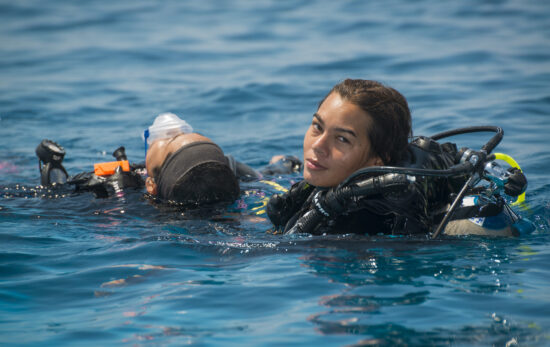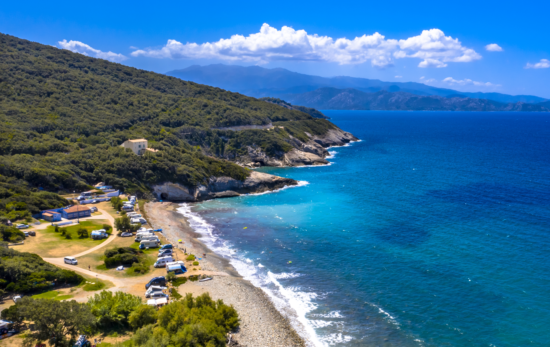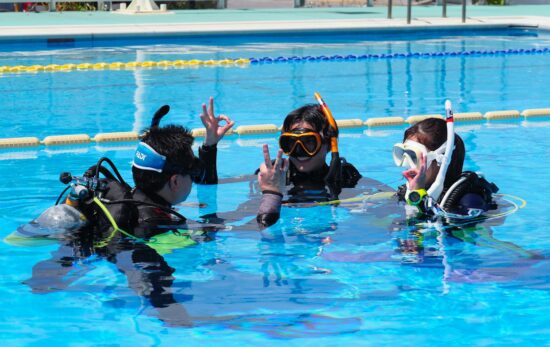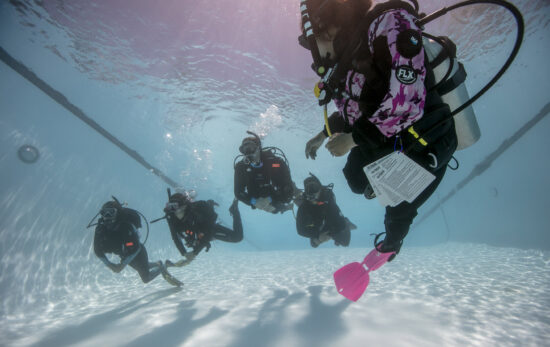Strong currents? The open ocean? Large marine life? As a beginner, it’s easy to feel intimidated by or anxious about more challenging dives, especially if you’re surrounded by seasoned divers who know what they’re doing.
Yes, you’re a beginner. But does this mean you have to make do with boring dive sites as you gain experience? Or even worse, push yourself out of your comfort zone? ABSOLUTELY NOT!
Every diver has their own insecurities, but diving within your limits helps you overcome your anxieties, increase your confidence underwater, and Live Unfiltered™.
We’ve scoured the seas through decades of diving, and we’ve put together some of the most epic and best dive sites for beginners. We’re talking about dive sites:
- below 18 meters (60 feet)
- with excellent visibility
- rich in marine life
- and boasting calm waters.
So if currents, low visibility, or deep diving still give you a little anxiety, this list is for you. And, if you’re uncomfortable with boat dives (because of seasickness or other reasons), we’ve also included plenty of shore dives with rewarding marine encounters.
Warning: Easy diving doesn’t mean dull dive sites — quite the opposite! Continue reading for our list of the best dive sites for beginners that are sure to yield epic logbook entries.
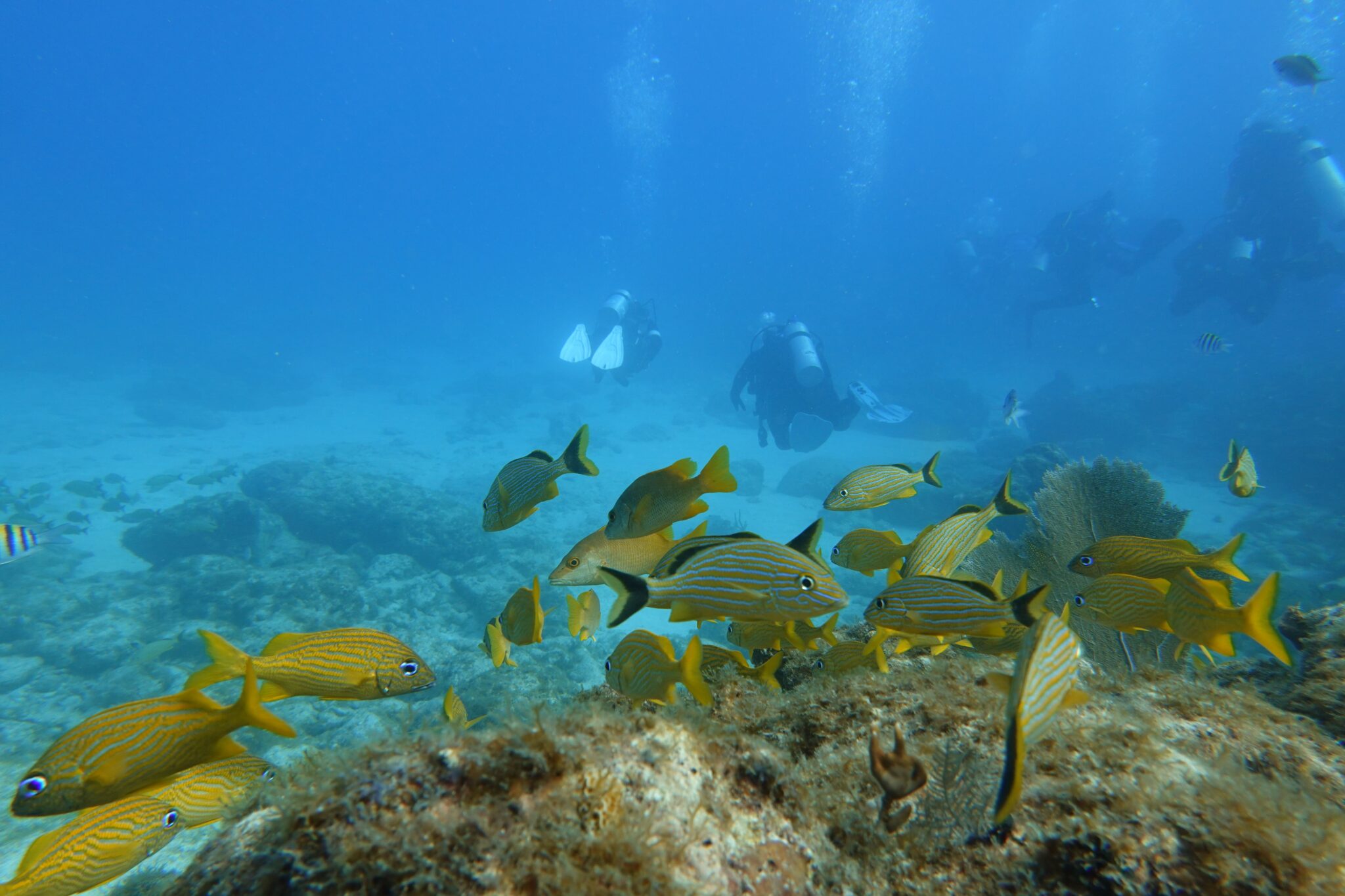
1. The Winch Hole, Florida Keys, USA
In the Sunshine State of Florida in the USA, you’ll find the Florida Keys, a chain of coral islands with a Caribbean-like climate and marine life.
With little to no currents and shallow dive sites, the Florida Keys have some of the best dive sites for beginners.
Don’t miss The Winch Hole dive site on Molasses Reef, Key Largo. As the name suggests, there’s a large winch believed to be from an Australian passing ship that ran aground in the 1800s. It’s an interesting underwater attraction situated on a sand patch 8 meters (25 feet) deep.
The dive site is only a 45-minute boat ride from shore, and once you’re on the reef, you can easily explore other nearby dive sites, where you can see eagle rays, groupers, snappers, and barracudas. As a bonus, this is also a great area for night diving if you want to expand your skill set and see what goes on beneath the surface after sunset.
Best Time To Go: The high season for the Florida Keys is between May and September (but watch out for any incoming hurricanes). The rest of the year, although accessible, comes with lower visibility, rougher sea conditions, and colder waters.

2. Karpata, Bonaire
Bonaire is a surreal spot in the Caribbean Sea. The island is less developed and more peaceful than many of its neighbors. Plus, the marine environments around the island have also been protected for 35-plus years, which is why the corals are so pristine, the fish so plentiful, and the waters so clear.
Set on the water’s age, most dive sites are literally within walking distance from the shore. And with virtually no currents, diving in Bonaire is as easy as it gets.
Taking the crown as one of the best dive sites for beginners is Karpata, in the northern part of the island.
Reaching the dive sites is the hardest part. Fully kitted, you’ll first make your way down 20 or so steps toward the seafront and then walk over the rocky beach. Once in the water, it’s a short swim toward the beautiful ,sun-soaked corals that begin as shallow as 6 meters (19 feet). The deeper you go, the denser the coral reef and marine population. You’re practically guaranteed to see sea turtles, too.
Another distinctive characteristic of this beloved dive spot is big, coral-encrusted ship anchors scattered around the seabed at various depths, so keep your eyes peeled for them.
Best Time To Go: Bonaire is a year-round diving destination, but if you want to avoid any rainfall, go in the dry season between April and November.

3. USS Kittiwake, The Cayman Islands
With healthy coral reefs, dramatic drop-offs, grottos, and world-famous wrecks, you can make your vacation in the Cayman Islands as laid-back or as active as you want it to be.
But whatever you do, don’t miss the USS Kittiwake, a sunken ship just off Seven Mile Beach in Grand Cayman.
Built in 1946, the USS Kittiwake was a US Navy submarine rescue ship and supply vessel that made trips all over the world until it was decommissioned in 1994. The Cayman government bought the ship and, in 2011, deliberately sunk it to form an artificial reef.
Today, the USS Kittiwake in the Cayman Islands is a world-famous dive spot for snorkelers and divers alike. Starting at 5 meters (15 feet), the wreck lies at a maximum depth of 20 meters (65 feet), so you’ll need to keep an eye on your depth.
The excellent visibility and current-free dive conditions are perfect for beginner divers who want to dip their fins into wreck diving. Should you decide to sign up for the Wreck Diver Specialty course, you’ll be able to explore the wreck’s different zones, cabins, and original features. Holes have been cut in the ship and all hazardous materials and dangling metal parts have been removed to make exploring the wreck safe and easy.
If you don’t feel like penetrating the wreck, that’s fine too! The USS Kittiwake is 76 meters long and 13 meters wide (251 ft by 44 ft), and because it’s in excellent condition, swimming alongside it is also a rewarding experience.
Best Time To Go: The Cayman Islands are a year-round diving destination, but November to April promises sunshine, calmer waters, and excellent visibility.

4. West End Wall, Roatán, Honduras
Roatán is a top diving destination in Honduras that sets the bar for epic dive sites for beginners. Perhaps no other dive site embodies what it means to dive in Honduras as well as the West End Wall dive site.
Located on the western side of the island, this is a wall dive site accessible by boat. You’re dropped on the edge of the wall at around 6 meters (20 feet). The site drops down into the depths, but even within 18 meters (60 feet), you can explore the unspoiled beauty of the underwater world.
Sprouting from the side of the walls are Gregorian fans and sponges that attract a buzzing marine population, including lobsters, eels, eagle rays, and shoals of tropical fish.
There may be some current, but it’s usually gentle and the perfect way for beginners to learn how to drift dive.
Best Time To Go: You can dive all year round, but the months between November and May offer the best visibility.

5. Abu Dabbab, Marsa Alam, Egypt
For decades Egypt has cemented its reputation for being a top diving destination. Once you’ve seen it, few other places will be as good as diving in the Red Sea.
The waters of Marsa Alam have some of the most famous dive sites in the Red Sea, and one of the best dive sites for beginners is Abu Dabbab. Located in a sheltered bay, Abu Dabbab is an easy shore dive full of surprises. In fact, it’s one of the few places in the world where you dive with the endangered dugong (aka sea cow). Seeing this rare marine life is a privilege, and it’s moments like these that you understand what it means to Live Unfiltered.
On a more general note, the dive site has an average depth between nine and 18 meters (30 and 60 feet). The seafloor is a coral garden inhabited by different species of turtles, stingrays, sharks, and tropical fish.
Best Time To Go: The warmest waters are between June and September. During the rest of the year, a thicker wetsuit is a must.
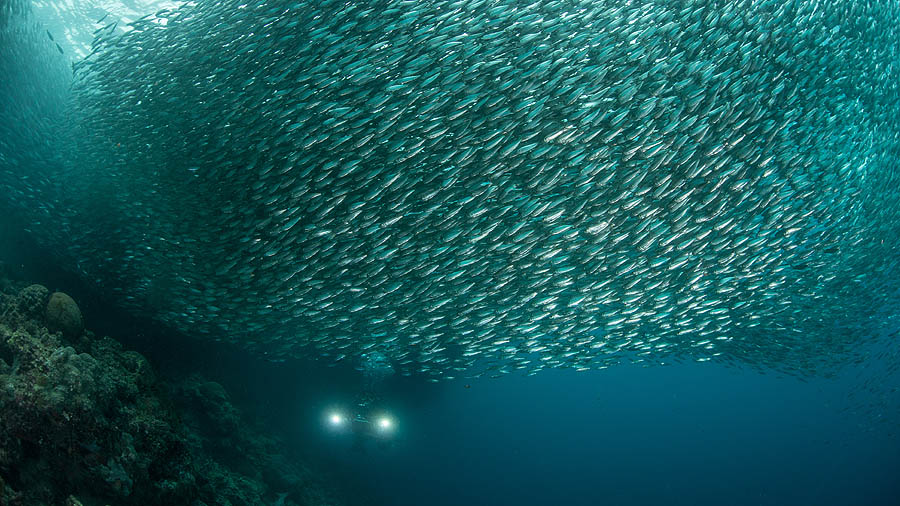
6. Sardine Run, Moalboal, The Philippines
Cast your eyes toward Asia, and in the Philippines, you’ll find some of the best dive sites for beginners. It’s not hard to see why. Located in the Coral Triangle, the Philippines is home to 75% of the world’s coral species, which naturally support a bountiful array of marine life.
The Philippines is also one of the handful of places in the world where you can dive with millions of sardines, at a site known as the Sardine Run.
Every day in Moalboal, on the island of Cebu, thousands if not millions of sardines gather to form massive schools of fish that move in perfect synchrony. Witnessing the shoal of fish harmoniously change direction and speed, morphing into different shapes, is like watching a shimmering, hypnotic dance. It’s epic, it’s exhilarating, it’s surreal. It’s a rare spectacle of nature that allows you to truly Live Unfiltered.
You can find the Sardine Run as close as 20 meters (65 feet) from Panagsama Beach at a depth of two to 15 meters (seven to 40 feet). But a short boat ride away promises the same elegant experience plus the chance of seeing other incredible marine life, such as tuna, trevally, and nudibranchs.
Best Time To Go: During the dry season between November and May.
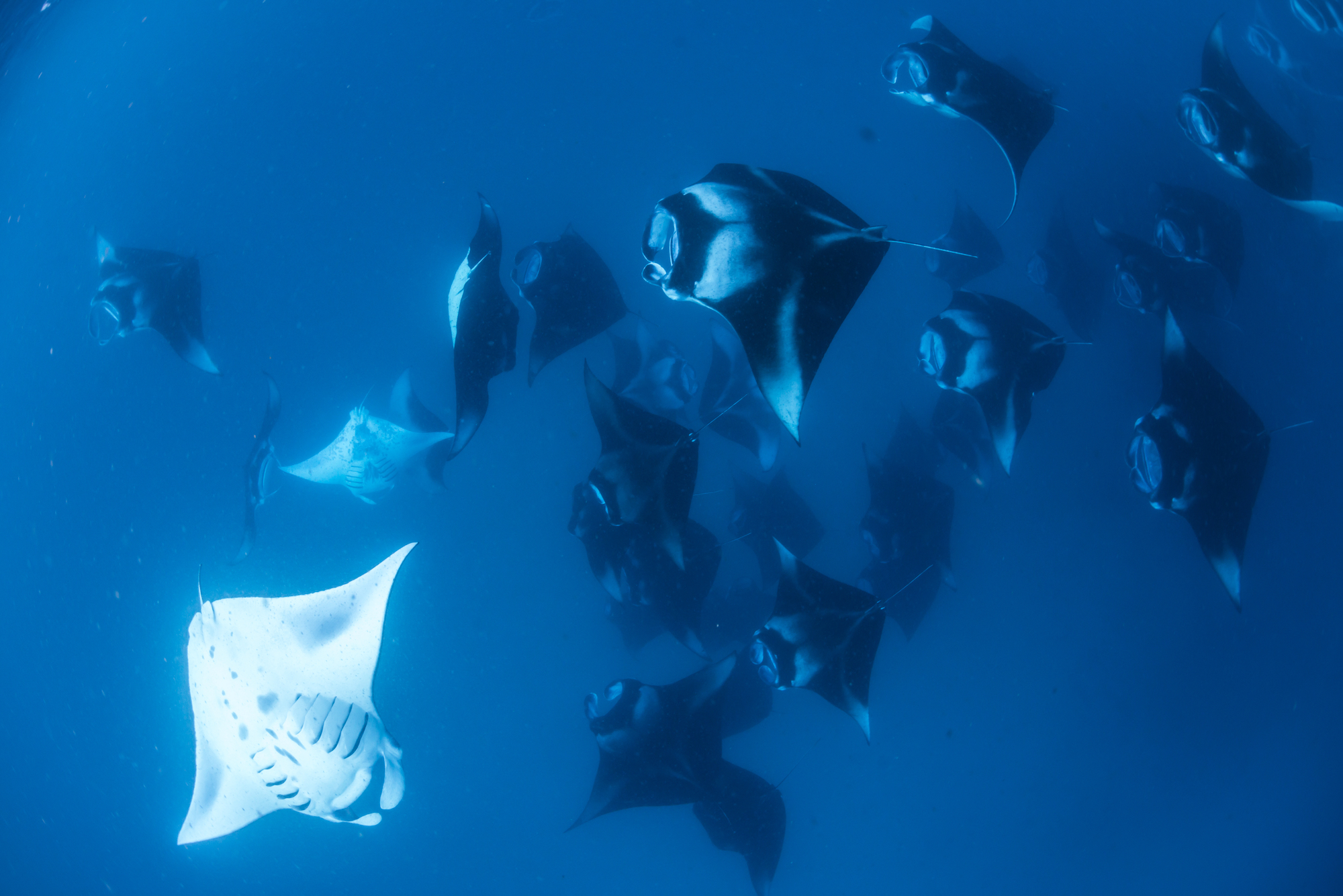
7. Hanifaru Bay, The Maldives
The Maldives has always been a bucket list dive destination – and for good reason. The Indian Ocean nation is made up of thousands of coral islands where lucky divers can see manta rays, sharks, and even whale sharks.
Standing out from other atolls is Baa Atoll with its UNESCO-worthy level of marine life. Don’t miss Hanifaru Bay — the world’s largest feeding and nursing ground for hundreds of manta rays. To add to the mix, several whale sharks congregate here as well. Just so you know, Hanifaru Bay is a snorkeling-only spot, but it doesn’t make it any less epic. If anything, it helps you acclimatize to swimming next to big marine life in a calm environment.
Good To Know: August to October is your best bet for seeing the manta rays and while sharks while also enjoying calm waters and good visibility.
Live Unfiltered
All beginners have to start somewhere, right?
So save this list and use it to get started on your diving journey or as inspiration for your next dive trip.
Wherever you decide to go, dive on your own terms so that YOU decide what to see and how far to stretch your comfort zone. And, remember, always Live Unfiltered.
